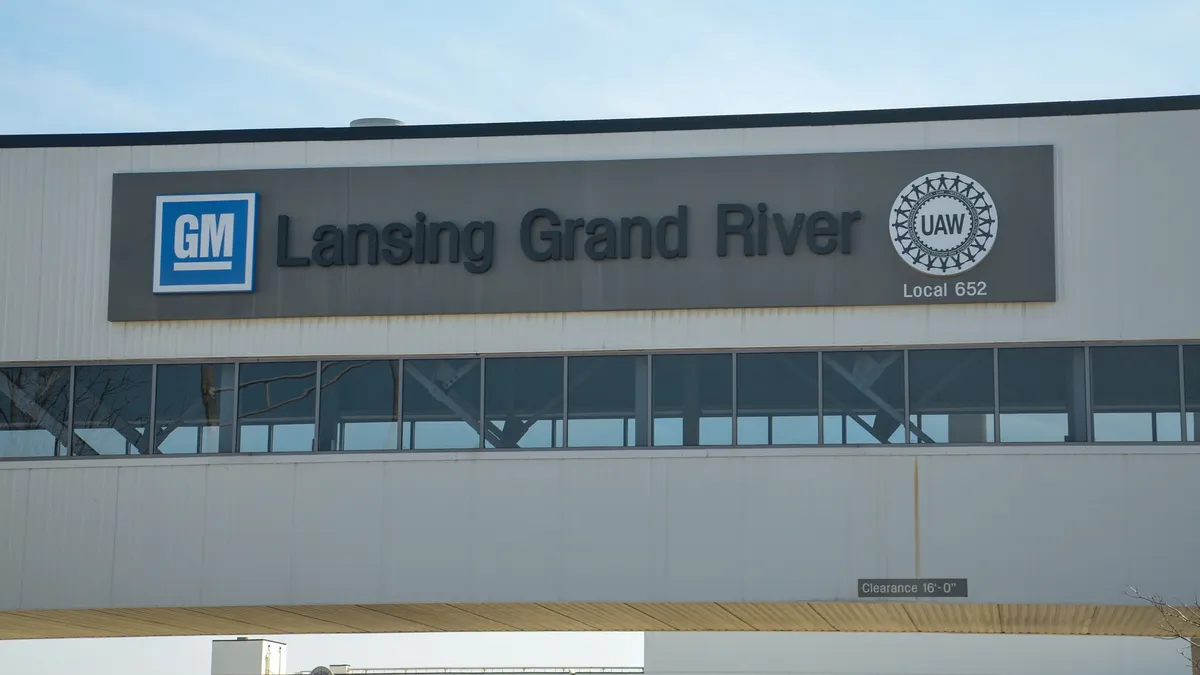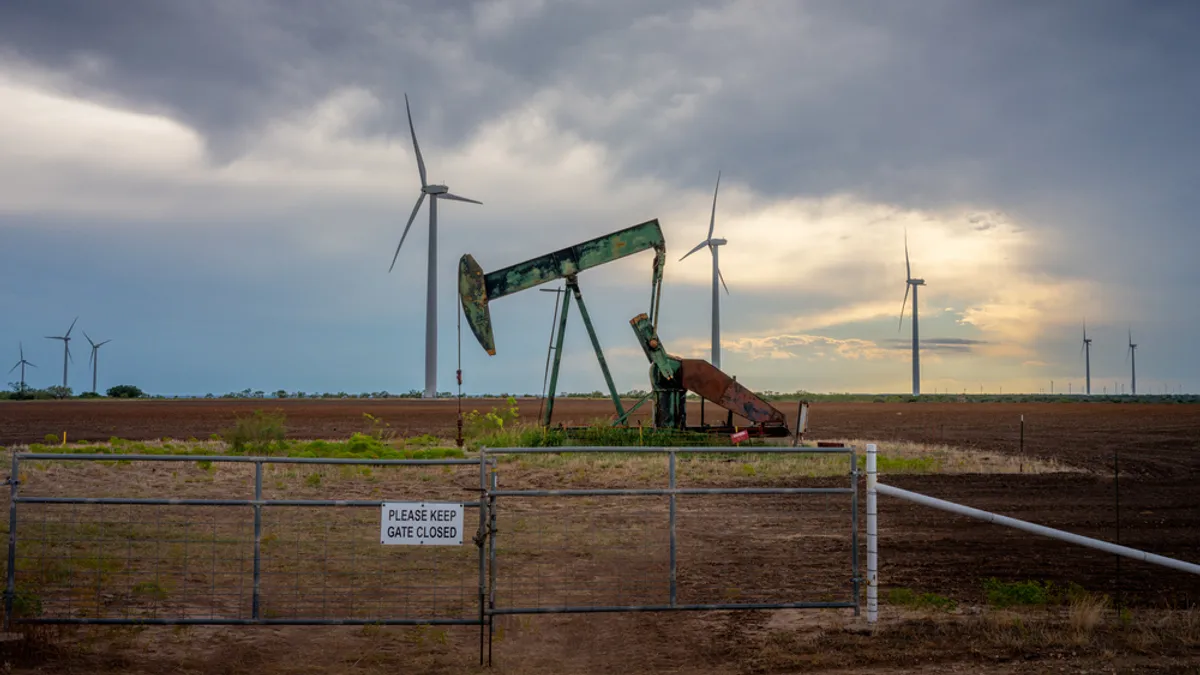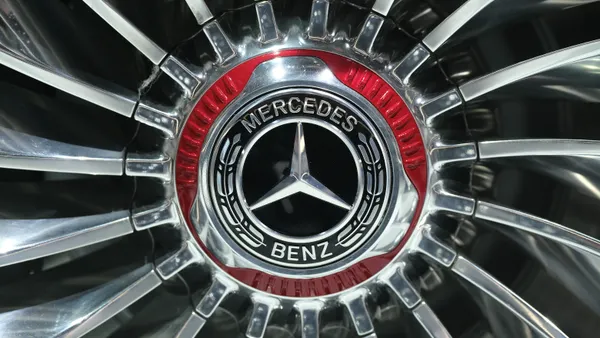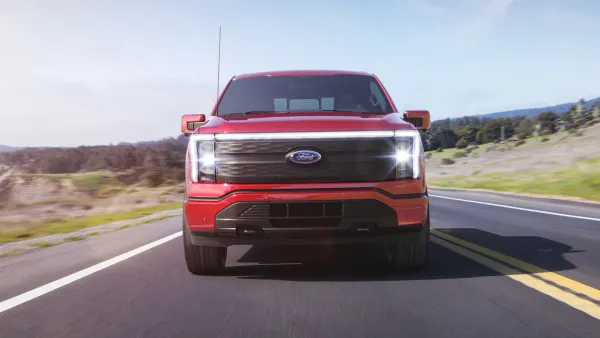General Motors and Stellantis were among several companies in line last summer for federal grants to convert at-risk plants to support electric vehicle manufacturing.
However, with the status of those funds uncertain, automakers, along with suppliers, have pivoted away from those plans. For now, they intend to continue making gas-fueled vehicles, as well as components at those at-risk factories, instead of retooling them to make EVs and parts to advance that technology.
While the Department of Energy confirmed in an email to ESG Dive sister publication WardsAuto that it hasn’t yet made any determinations regarding grants awarded by the previous administration under the Domestic Manufacturing Auto Conversion Grants program, the department on Oct. 2 announced the cancellation of more than 300 other financial awards for various energy initiatives, which cumulatively are projected to save $7.6 billion.
“As Secretary (Chris) Wright made clear, the Department continues to conduct an individualized and thorough review of financial awards made by the previous administration,” said Ben Dieterich, DOE press secretary and chief spokesperson.
Some automakers await word on federal grants
GM said it has not received any new information regarding the status of its $500 million grant through the DOE’s program. Stellantis said its two grant applications through the program totaling $585 million remain under review.
However, representatives for both automakers expressed a willingness to continue working with the DOE.
“We’re hopeful that once the government reopens, that process will resume and will be completed soon after,” Jodi Tinson, a spokesperson for Stellantis, said in an email.
Liz Winter, a spokesperson for GM, in an email said that the automaker “will work with the DOE on any next steps to support American innovation, jobs and manufacturing.”
But supplier ZF North America — which anticipated receiving $158 million through the program to convert its plant in Marysville, Michigan, to produce E-mobility products like its e-Beam axle — dropped its pursuit of the grant, Tony Sapinza, head of communications for ZF North America, said in an email. Slower adoption of E-mobility products drove the company to withdraw its application, he said.
“There is a clear trend toward slower BEV adoption and therefore a reduction in customer demand for products like the e-Beam that was planned for the Marysville site,” Sapinza said. “We therefore will be unable to leverage this grant for Marysville and withdrew our application for DMCG funding some time ago.”
However, ZF North America remains optimistic about the future of its Marysville plant and the long-term trend toward greater electrification of U.S. vehicles, Sapinza said.
Staying with gas vehicle production for now
Although GM and Stellantis have both scaled back EV production plans in the U.S., each automaker will continue to produce next-generation gas-fueled vehicles and components at its factories which were once considered at-risk.
These actions also support the automakers’ previously expressed plans to boost domestic production to mitigate the impact of tariffs and capitalize on the government’s plan to roll back greenhouse gas emissions rules.
Winter said GM’s Grand River Assembly plant in Lansing, Michigan, which was targeted for the DOE program funds for electrification, will now produce a next-generation internal combustion engine Cadillac CT5 sedan with globally sourced parts. She said the automaker will retire the current generation CT4 and CT5 after the 2026 model year, adding that the CT4 will continue through June 2026 and the CT5 until late 2026.
Meanwhile, Stellantis, which initially targeted the DOE program funding for electrification conversion at plants in Belvidere, Illinois and Kokomo, Indiana, has also pivoted its production plans.
Last month, Stellantis announced a $13 billion investment to boost U.S. manufacturing. Included in those plans is reopening its Belvidere factory to expand production of the Jeep Cherokee and Jeep Compass SUVs for the U.S. market. Meanwhile, its Kokomo plant will begin production of a new 4-cylinder engine in 2026.
Tinson said Stellantis’ product strategy ensures it offers customers freedom of choice with a range of vehicle powertrains.
“Stellantis’ multi-energy platforms allow for maximum flexibility,” she said.











